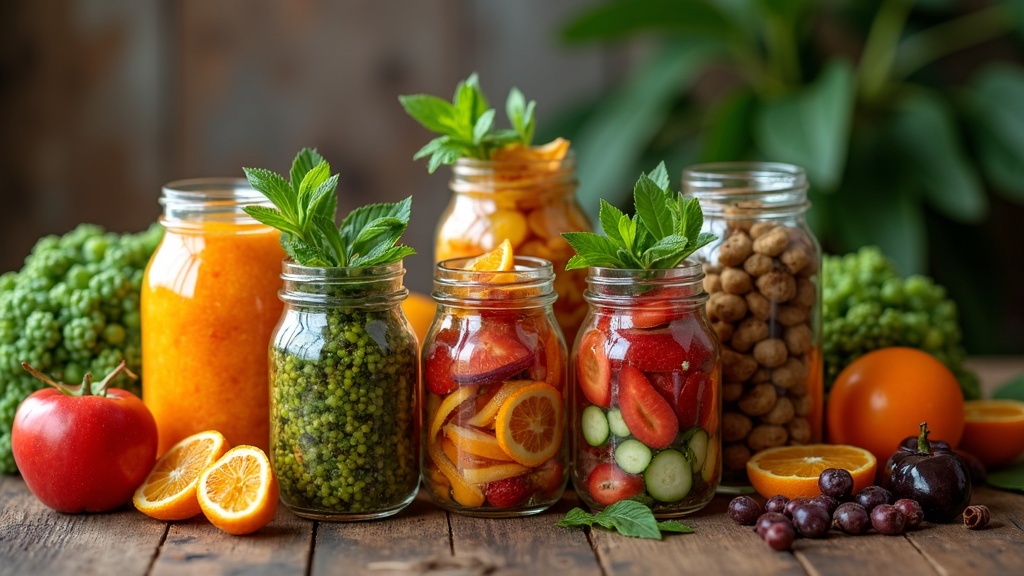Dehydrating food has been around for thousands of years. It’s a pretty handy way to make the most of your garden or score from the farmers market. When you pull moisture out of fresh fruits, veggies, or herbs, you suddenly have snacks and ingredients that last for months. Drying food at home fits right in with a self-reliant lifestyle and helps you keep healthy, budget-friendly food on hand year-round.

Why Dehydrate Food? Core Benefits You’ll Appreciate
Drying food isn’t just about stocking up for emergencies. There’s a bunch of everyday perks that make this method really practical. I’ve found that having a stash of home dried apples, berries, or tomatoes in the pantry is a total game changer for quick snacks, baking, and cooking. Here’s what really stands out:
- Preserves your harvest: Turns big garden hauls into shelf-stable ingredients.
- Reduces food waste: Saves money by giving you more time to use leftovers or extra produce.
- Lightweight and portable: Dried food is awesome for camping, traveling, and emergency kits.
- Nutrient packed: Keeps much of the vitamins, minerals, and fiber, unlike some other preservation methods.
I love being able to control what goes into my snacks, with no weird additives, just wholesome food.
How Food Dehydration Works
The magic behind food dehydration is pretty simple; it strips out water so bacteria, yeast, and mold can’t spoil your food. Most people use electric dehydrators these days, but you can also air dry or use your oven. The core steps are the same:
- Prep the food: Slice or chop into even pieces for consistent drying.
- Set the temperature: Usually between 95°F and 145°F depending on what you’re drying.
- Dry to the right texture: Fruits should feel pliable and leathery; veggies should be crisp or brittle.
Electric dehydrators make this process easy since they offer even heat and airflow. Plus, they use a lot less energy compared to canning or freezing supplies. Investing in a quality dehydrator can also expand the types of foods you can dry, such as making your own jerky or yogurt cultures for an added homemade touch.
Eating Better: Nutrition and Health Advantages
Home dehydration is a win for nutrition. Gentle heat means vitamins and minerals mostly stick around, especially compared to higher-heat methods like oven-drying or canning. Most dried fruits and veggies keep their fiber, potassium, and antioxidants.
- No added sugar or preservatives: Store bought dried fruit is often sweetened and loaded with sulfites to keep it pretty. At home, I keep it real with just fruit and maybe a dash of lemon to prevent browning.
- Wholesome convenience: Having dried strawberries or pears handy means fewer ultra-processed snack attacks.
- Better ingredient management: I can dry garden herbs, tomatoes, and peppers, then use them all year long, adding flavor and nutrients to tons of recipes.
This is super important for anyone who wants to eat clean or has dietary restrictions. You’re in control of what’s in your food, which brings real peace of mind. Plus, dried foods can help you meet your nutritional needs even in winter months when fresh produce can be expensive or harder to come by.
Saving Money and the Planet: Economical and Eco-friendly
Dehydrating at home checks a lot of boxes if you’re looking to save money and reduce your environmental footprint. Here’s how it comes together:
- Buy in bulk, dry the excess: When produce is in season and cheap, I stock up and dry what I can’t eat fresh.
- Less energy than freezing or canning: Dehydrators use moderate, steady power. You don’t have to heat giant pots of water or keep a freezer running all the time.
- Reduce packaging waste: Drying your own food means less reliance on single use plastics or individually wrapped store bought snacks.
Plus, tossing less spoiled food means you’re getting the most out of your grocery budget and cutting down on food waste, which is really important for the environment. By making these simple switches, you’re not only saving cash but also making choices that benefit the planet.
Easy Storage and Everyday Convenience
Once food is dried, it shrinks down and tucks neatly into jars or zip-top bags. You get a pantry full of lightweight, flavorful ingredients that don’t take up much space. Here are a few ways I use mine:
- On-the-go snacks: Dehydrated apple slices, banana chips, or veggie crisps are awesome for road trips or kids’ lunches.
- Boosting meals: Toss a handful of dried mushrooms or peppers into soups, stews, or omelets. They soak up liquid and bounce back to their former glory.
- DIY smoothie boosters: I grind up dried berries or spinach into powder and add them to smoothies for a nutrition kick (and zero added sugar).
- Emergency preparedness: If the power goes out or you need to keep food on hand for a while, dried foods are shelf stable and ready to use; no refrigeration required.
Dried foods are basically ready when you are, making them a great asset for busy families, campers, or anyone who likes being prepared. You can even prepare custom snack blends for school or work, ensuring healthy choices are always within arm’s reach.
Getting Started With Dehydration at Home

It’s not complicated to get started. I started out with an affordable stackable dehydrator, but you can try oven drying or air drying in arid climates. After getting comfortable with using a dehydrator, I upgraded to a sturdier dehydrator with removable trays like this one. A few quick tips:
- Go for even slices: This helps your food dry consistently. A mandoline or sharp knife works great.
- Follow safe drying times: Every food is a bit different. Check a trusted chart, like resources from the National Center for Home Food Preservation, for times and temps.
- Condition your dried food: After drying, store food in a glass jar for a few days, shaking daily to check for condensation. If you spot moisture, it needs more drying.
- Label and date: You’d be surprised how easy it is to mix up dried apples and pears later. Clear labeling keeps your pantry in order.
Cleanliness is key to avoid contamination. Always start with fresh, high-quality produce and wash everything thoroughly. You may want to experiment with different seasoning blends on your snack foods, which can be a fun way to mix in some variety and introduce family members to new flavors.
(This post does contain affiliate links to help support Homestead Flavor. This does not come at a cost to you. Thank you for the support.)
Some Things to Consider Before Dehydrating Food
Like any food preservation method, there are a few things to look out for:
- Texture preferences: Not everyone is wild about chewy dried pears or crunchy carrots. It’s okay to experiment and find what works for your family.
- Proper sealing: Dehydrated food does best in airtight containers in a cool, dark spot to avoid moisture and pests.
- Storage time: Most home-dried foods will last six months to a year at room temperature. For even longer storage, you can vacuum seal and freeze them.
- Flavor changes: Some foods taste sweeter or more intense after drying, which is great for snacking but might take some getting used to in recipes.
Careful research helps you avoid common pitfalls, like under drying or using overly ripe produce that doesn’t last as long. If you’re drying meat or making jerky, always follow safe guidelines to avoid food safety risks.
FAQ: Common Questions About Dehydrating Food
Q: What foods can I dehydrate at home?
A: Fruits (apples, bananas, mangoes), veggies (carrots, tomatoes, peppers), herbs, even meat and fish. There’s a lot of flexibility here and you can get creative with your favorites.
Q: How long does it take to dehydrate food?
A: Depends on the type; herbs can dry in a few hours, but apple slices might take six to ten hours. Your dehydrator manual or a reliable resource will give you exact times.
Q: Do I need any special equipment?
A: A food dehydrator is the easiest and most efficient, but you can start in an oven or even air dry some foods. For serious preservation, a good dehydrator is definitely worth checking out.
Q: How do I know when food is fully dried?
A: Most fruits should be pliable and not sticky. Veggies are usually crisp or brittle. For backpacking or storage, I prefer to dry a little longer to be safe.
Dehydration fits into all kinds of lifestyles, whether you’re a mealprepper, backpacker, or someone who just likes homegrown snacks and pantry convenience.
Putting Dehydration Into Your Everyday Routine
Dehydrating doesn’t need to be an all day project. I toss sliced fruit in before bed or while I’m working from home. The next day, my kitchen smells fantastic and I’ve got snacks for the week. There’s real satisfaction in opening a jar and tasting your summer berries in the middle of winter or surprising the kids with their favorite dried treats for school.
Taking a little time here and there to dry fruit, veggies, or herbs means fewer trips to the store and less stress about things spoiling in the crisper drawer. I really enjoy having these healthy choices around. It feels good to know exactly what’s in my food, and sharing homemade snacks with friends or family is an easy way to add some fun to everyday routines. Whether you’re prepping for emergencies, playing around with new recipes, or just want more control in your kitchen, dehydration is a simple practice that gives back all year long. Try drying some of your favorite produce and see how quickly it becomes a regular part of your kitchen lineup.
What might be some of the things you would try dehydrating first?
